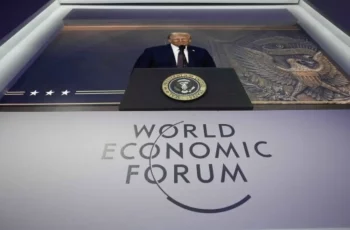
By autumn 2025, the confrontation between the United States and China had shifted from a “frozen conflict” to an open second round of the trade war.
The immediate trigger came from Beijing’s new export restrictions on critical materials — including rare earth elements, graphite, gallium, and germanium — resources vital for modern electronics and green technologies.
Washington responded with tariffs of up to 100% on a wide range of Chinese imports — from cars to semiconductors — and expanded export controls on industrial and software technologies, effectively cutting Chinese companies off from crucial know-how.
At the same time, both sides raised port fees, hitting global logistics chains and increasing shipping costs.
Beijing, in turn, imposed sanctions on several U.S.-affiliated companies involved in shipbuilding and transportation projects — a clear signal that it is ready to respond in kind.
Thus began a new chapter of economic confrontation between the world’s two largest economies — now extending far beyond trade into the realms of technology, logistics, and strategic raw materials.
From tariffs to geo-economic punishment
Unlike the 2018–2019 trade war, the current confrontation runs deeper.
It now encompasses the structural backbone of the global economy — technology exports, strategic resources, energy logistics, and financial regulation.
Analysts describe it as a system of “geo-economic punishment.”
Washington aims to restrict China’s access to advanced technologies and global capital markets.
Beijing, in turn, targets the United States’ industrial weak spots by weaponizing its dominance in the supply of critical raw materials.
According to the Center for Strategic and International Studies (CSIS), from 2023 to 2025 China expanded export controls to at least 16 categories of strategic minerals.
Rather than imposing full bans, Beijing uses a licensing regime — a kind of “smart choke” — slowing exports without halting them completely, forcing Western companies to seek costly alternatives.
The United States, meanwhile, continues to pursue its “friend-shoring” strategy — relocating key industries to friendly nations.
Yet experts agree: in the short term, replacing Chinese suppliers is impossible.
Building new supply chains will take years and require tens of billions of dollars in fresh investment.
Why rare earths are at the heart of the conflict
Rare earth elements are not just raw materials — they are the lifeblood of modern industry. They power everything from microchips, electric motors, and batteries to radar systems, lasers, and renewable-energy technologies.
Without them, neither the “green transition” nor the defense sector can function.
China currently controls roughly 70% of global rare-earth production and over 80% of processing capacity. That dominance makes any Chinese export restriction an act of economic pressure on the United States.
For Washington, rare earths are an Achilles’ heel.
Domestic mining programs remain slow due to environmental limits and high costs, while alternative suppliers — such as Australia, Canada, or Chile — face logistical bottlenecks.
The consequences are already visible: in the weeks following Beijing’s new export rules, prices for lithium, cobalt, and neodymium rose by more than 25%, while U.S. chipmakers began warning of potential supply disruptions.
When economics meets the ballot box
For Donald Trump, the renewed trade war is not only an economic measure — it’s also a political weapon. Ahead of the 2026 midterms, the White House wants to project strength, portraying Trump as a leader “making China pay.” His administration’s rhetoric focuses on protecting American jobs, reviving industry, and defending national security from “foreign dependence.”
But in practice, the tariffs are hitting U.S. consumers and businesses the hardest.
According to Congressional estimates, more than 60% of the costs from the 2024–2025 tariffs are being passed directly to U.S. households through higher prices on electronics, automobiles, and construction materials.
After a brief period of post-pandemic stability, inflation is again rising.
Beijing, by contrast, is acting more quietly — but no less decisively.
Its strategy is long-term and asymmetric: to inflict gradual, strategic pain on the United States without undermining its own exporters.
By tightening control over resources and logistics, China demonstrates that the global economy cannot function without it.
As the Beijing Institute of International Studies put it, China does not aim for immediate victory — it aims to prove that interdependence is its ultimate leverage.
Shockwaves across the global economy
The effects of this new trade war are rippling far beyond the two countries directly involved. Markets are becoming more volatile, investors more cautious, and multinational companies more uncertain about their supply chains.
- Rising Costs and Inflation
Tariffs function as a hidden tax on imports — one ultimately paid by the consumer.
In the United States, prices for electronics, vehicles, and building materials have already climbed. For Europe, whose manufacturing chains rely heavily on Chinese components and raw materials, this spells declining competitiveness and squeezed profit margins.
- Fragmentation of Global Trade
Corporations are diversifying production to bypass China — moving assembly lines to Vietnam, Indonesia, and Mexico.
But these alternative routes are more expensive and less efficient.
Global trade is no longer unified; it is evolving into a web of regional economic blocs, each with its own dependencies and vulnerabilities.
- A Raw-Materials Shock
Restrictions on Chinese exports of rare earths and other strategic metals are pushing up global prices.
This threatens to slow the clean-energy transition and raise the cost of manufacturing everything from smartphones to electric vehicles.
The inflationary effect is already evident across global commodity markets.
Europe caught between two fires
The European Union finds itself trapped between two giants.
Brussels rhetorically supports Washington’s calls for “fair trade” and “democratic standards,” yet the EU’s industrial base remains heavily dependent on Chinese imports — from solar panels and batteries to chemical reagents and mechanical components.
European analysts warn that a prolonged U.S.–China standoff could cripple Europe’s industrial ambitions.
Manufacturing powerhouses such as Germany and France face falling exports, rising input costs, and shrinking margins.
Meanwhile, European corporations risk losing access to the Chinese market, which generates billions of euros in annual revenue.
Caught in this dilemma, Europe risks becoming the biggest casualty of a war it did not start.
New economic reality
The U.S.–China trade war no longer looks like a temporary dispute — it has become the defining structure of the new global economy.
Resources, technology, logistics, and finance have all turned into weapons in a long-term contest for dominance.
China is proving that control over raw materials can be a powerful instrument of geopolitical influence.
The United States is showing that it is willing to endanger global stability in the name of maintaining leadership.
The era of globalization — where everyone gained through cooperation — is over.
A new era has begun, defined by economic blocs, protectionism, and strategic competition.
And in this new world, every nation must pay the price for its dependencies.










Comments